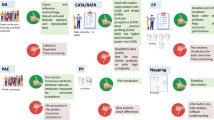Abstract
The paper presents the possibility of the application of QFD method as an effective tool to identify consumer preferences for a new characteristic of a sponge-fatty cake as well as designing of the high quality products of food industry. The consumer expectations were examined in relation to these products, and then translated into technical specifications, important from the point of view of the manufacturer of sponge-fatty cakes. The analysis showed that there is a chance of producing a type of sponge-fatty cakes that will meet the requirements of consumers, and at the same time meet the requirements of nutritionists and technologists. Results of the current study indicated that the main parameters responsible for the quality of the final product, preferred by consumers, are: the appropriate content of liquid and solid fat in the form of crystalline \(\beta ^{'}\), and the presence of refined fats. This means that consumers prefer a product that has a high volume and a suitable color, and does not have any perceptible “sandy” or “gritty” texture. The analysis showed that the resulting final product meets the respondents’ most rigorous requirements in terms of sponginess, product volume, humidity, brittleness; the analysis also revealed the additional health benefits of our product in comparison to two other products of competing food companies. However, delicate modifications of aroma, smell, and color were necessary. Besides, this paper showed how customers’ voice can be heard in order to reduce development and manufacturing costs, improve product quality, provide features that satisfy customer needs, and reduce development time. Furthermore, to give more insight into the problem, in this paper we have adopted a new approach by extending the quality function deployment matrix beyond the house of quality.


Similar content being viewed by others
Change history
31 July 2015
An erratum to this article has been published.
References
Abdullah M. Z., Guan L. C., Lim K. C., & Karim A. A. (2004). The applications of computervision system and tomographic radar imaging for assessing physical properties of food. Journal of FoodEngineering, 61, 125–135.
Ayag, Z., Samanlioglu, F., & Büyüközkan, G. (2013). A fuzzy QFD approach to determine supply chain management strategies in the dairy industry. Journal of Intelligent Manufacturing, 24(6), 1111–1122.
Ayoola, O. S. (2013). Manufacturing quality function deployment: Literature review and future trends. (Review). Engineering Journal, 17(3), 79–103.
Chan, L. K., & Wu, M. L. (2002). Quality function deployment: A literature review. European Journal of Operational Research, 143(3), 463–497.
Fernández, L., Castillero, C., & Aguilera, J. M. (2005). An application of image analysis todehydration of apple discs. Journal of Food Engineering, 67(1–2), 185–193.
Haq, A. N., & Boddu, V. (2014). Analysis of enablers for the implementation of leagile supply chain management using an integrated fuzzy QFD approach. Journal of Intelligent Manufacturing. doi:10.1007/s10845-014-0957-9.
Hamrol, M. (2011). Zarządzanie jakością z przykładami (2nd ed.). Warszawa: PWN.
Heenan, S. P., Dufour, J. P., Hamid, N., Harvey, W., & Delahunty, C. M. (2010). The influence of ingredients and time from baking on sensory quality and consumer freshness perceptions in a baked model cake system. LWT-Food Science and Technology, 43, 1032–1041.
Jyothi, V. E., & Rao, K. N. (2011). Effective implementation of agile practices. International Journal of Advanced Computer Science and Applications, 2, 41–48.
Kutschenreiter-Praszkiewicz, I. (2013). Application of neural network in QFD matrix. Journal of Intelligent Manufacturing, 24(2), 397–404.
Kusińska, E., & Starek, A. (2011). Właściwości mechaniczne tekstury ciasta biszkoptowo-tłuszczowego. Inżynieria Rolnicza, 5, 157–163.
Kusińska, E., & Starek, A. (2012). Wpływ dodatku sacharyny na właściwości fizyczne ciasta biszkoptowo-tłuszczowego. Inżynieria Rolnicza, 3, 89–99.
Lee, S. M., Lee, K. T., Lee, S. H., & Song, J. K. (2013). Origin of human colour preference for food. Journal of Food Engineering, 119, 508–515.
Mehrjerdi, Y. Z. (2010a). Applications and extensions of quality function deployment (Review). Assembly Automation, 30(4), 388–403.
Mehrjerdi, Y. Z. (2010b). Quality function deployment and its extensions (Review). International Journal of Quality and Reliability Management, 27(6), 616–640.
Pable, A., Lu, S., & Auerbach, J. (2010). Integrated qualitative/quantitative techniques for food product quality planning. Journal of Food Quality, 33(1), 112–129.
Penc, J. (1995). Strategie zarządzania (1st ed.). Warszawa: Agencja Wydawnicza Placet.
Rutkowska, J., & Neryng, A. (2002). Właściwości reologiczne półproduktów ciastkarskich i ich wpływ na jakość wyrobu finalnego. Inżynieria Rolnicza, 1, 43–50.
Shen, X. X., Tan, K. C., & Xie, M. (2001). The implementation of quality function deployment based on linguistic data. Journal of Intelligent Manufacturing, 12(1), 65–75.
Shin, J. S., & Kim, K. J. (2000). Complexity reduction of a design problem in QFD using decomposition. Journal of Intelligent Manufacturing, 11(4), 339–354.
Sikorski, M. (2002). Zastosowanie metody QFD do doskonalenia jakości użytkowej serwisów WWW. Zeszyty Naukowe Politechnika Poznańska, 35, 119–130.
Szafrański, M. (2011). Wykorzystanie metody QFD w projektowaniu zintegrowanego system wspomagania dostępu do informacji w przestrzeni miejskiej. Zeszyty Naukowe Uniwersytetu Szczecińskiego. Ekonomiczne problemy usług, 68(651), 755–762.
Szcześniak, A. (2002). Texture is a sensory property. Food Quality and Preference, 13(4), 215–225.
Wanga, S., Karrech, A., Regenauer-Lieb, K., & Chakrabati-Bell, S. (2013). Digital bread crumb: Creation and application. Journal of Food Engineering, 116, 852–861.
Żbikowska, A., & Krygier, K. (2004). Wpływ składu kwasów tłuszczowych na cechy miękiszu ciast biszkoptowo-tłuszczowych. Food Science and Technology, Quality, 3, 219–227.
Żbikowska, A., Kowalska, M., & Rutkowska, J. (2012a). The quality of Polish spreadable fats especially with emphasis of trans isomers content. La Rivista Italiana delle Sostanze Grasse, 89, 62–69.
Żbikowska, A., Kowalska, M., & Rutkowska, J. (2012b). Zawartość fazy stałej a jakość i przydatność technologiczna szorteningów do produkcji ciast kruchych. Food Science and Technology, Quality, 19, 173–185.
Author information
Authors and Affiliations
Corresponding author
Additional information
An erratum to this article is available at https://doi.org/10.1007/s10845-015-1131-8.
Rights and permissions
About this article
Cite this article
Kowalska, M., Pazdzior, M. & Krzton-Maziopa, A. Implementation of QFD method in quality analysis of confectionery products. J Intell Manuf 29, 439–447 (2018). https://doi.org/10.1007/s10845-015-1120-y
Received:
Accepted:
Published:
Issue Date:
DOI: https://doi.org/10.1007/s10845-015-1120-y




